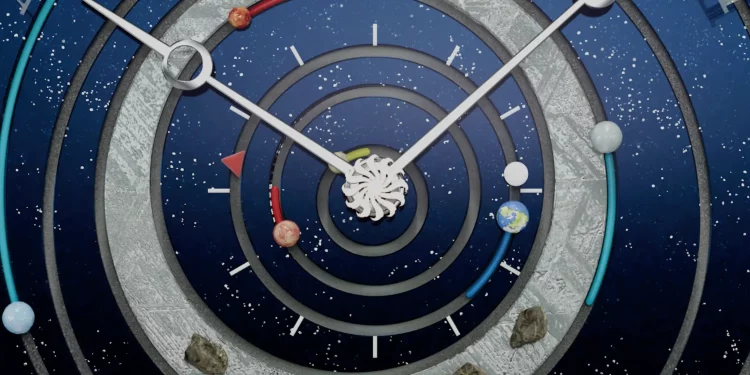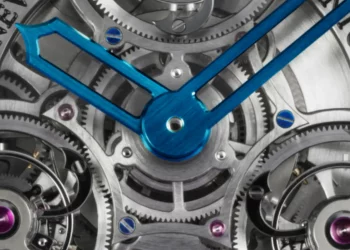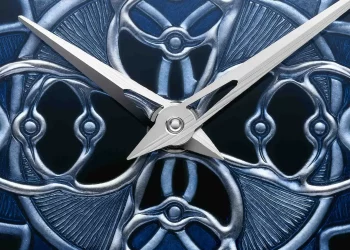
Today, I’d like to talk to you about a brand that doesn’t get enough time in the spotlight—which, to me, makes it even more intriguing. If you’re passionate about space and what surrounds us, this brand will resonate with you. You may have guessed it—or perhaps not—I’m going to talk about the brand Christiaan van der Klaauw. Before introducing one of the brand’s latest creations, let me tell you about the earlier history of Christiaan van der Klaauw, the founder of the brand, up to the takeover in 2022 by Pim Koeslag.
Christiaan van der Klaauw was born in Leiden in 1944, the city where the greatest Dutch scientist of all time, his namesake and inspiration Christiaan Huygens, began his studies in 1645. Leiden is also home to the Sterrewacht Leiden, the oldest university observatory in the world, founded in 1633. After completing his studies at the Leidse Instrumentenmakers School (LiS) and a watchmaking course, he moved from Leiden to the town of Joure in 1967. There, he joined a watchmaker specializing in Frisian longcase clocks. In 1974, Christiaan could do everything by hand and decided to create his own workshop, unveiling his first clock adorned with astronomical complications. In 1989, he received the title of honorary member of the Académie Horlogère des Créateurs Indépendants (AHCI). His innovative spirit shines, and in 1992 he won, with the Pendule Variable clock, the award for the most innovative watch design in Basel, Switzerland. Two years later, he began with his first wristwatch, the Wereld Tijd Satellite, which he presented in 1996. The watch indicated the time, day and date, as well as the moon phase, the day/night indicator and the place on Earth where it is exactly noon at the moment you look at your watch. In 1999, he presented his masterpiece, the Planetarium, equipped with the smallest mechanical planetarium in the world, which pays tribute to the great Dutch master astronomers, including Nicolaus Copernicus, Johannes Kepler, Christiaan Huygens and Eise Eisinga. As you will have understood, today we are going to talk about a model that will make you travel to other galaxies.
After retiring in 2009, the brand was repositioned and focused exclusively on handmade watches with astronomical complications, and the name “Astronomical Watches” was added. Christiaan van der Klaauw entrusted his workshop to the expert hands of the designer couple Daniël Reintjes and Maria Reintjes. After 10 years of friendship and collaboration with Christiaan, Daniël Reintjes, born in Amsterdam, took over, joined by Maria Reintjes, born in Utrecht, in the Netherlands. They have a successful track record in concept, design and strategy—they have owned and created different design companies, including the brand Dark Rush. They also introduced new collections and designed a new logo and a distinctive signature astronomical design, ensuring from that moment the recognition of every watch.
Under their direction, the brand underwent a metamorphosis: a new collection and magnificent astronomical complications followed, including the Real Moon series, with the most accurate 3D moon phase in the world. The main characteristic of the brand’s watches is the astronomical complication, with each watch featuring one or more astronomical complications. In addition, they decided to choose and design a distinctive dial material: the now-iconic aventurine glass dials, which give each timepiece a captivating celestial display that evolves with the light, serving as the perfect backdrop for complex astronomical features. Its planetarium module would also form the basis of the famous poetic complication Van Cleef & Arpels Midnight Planétarium in 2014 and the Lady Arpels Planétarium in 2018. In 2021, Daniël and Maria also received the ultimate recognition in watchmaking by being awarded the prestigious Grand Prix d’Horlogerie de Genève (GPHG) — Calendar and Astronomy Watch Award for the “Planetarium Eise Eisinga” at the Grand Prix d’Horlogerie de Genève.
Then, after more than 15 years, Daniël and Maria bid farewell to their beloved workshop to make way for a creative, Pim Koeslag, who arrived as CEO in 2022. Born in Almelo, the Netherlands, in 1981, Pim Koeslag began his watchmaking odyssey at the age of 18 at the Amsterdam Watchmaking School. There he won the school’s best watchmaker award. This success gave him the opportunity to do internships at Grönefeld and Patek Philippe in Geneva. After his training, he began working at Frédérique Constant as Technical Director. During his 20 years as Technical Director, he designed an impressive portfolio of 30 calibres, including a tourbillon, a minute repeater and a chronograph. Pim was also behind the launch of the luxury brand Ateliers de Monaco, where he served as CEO until 2022. After living and working in Geneva for more than 20 years, his family and he returned to the Netherlands. At the same time, Daniël and Maria Reintjes were looking to strengthen the company to prepare for the next phase of Christiaan van der Klaauw Astronomical Watches. This transition was very emotional for him, as he had met Christiaan himself when he was studying watchmaking in Amsterdam. He wanted to work with him because, at that time, he was still working alone. However, Christiaan advised him to gain more experience in Geneva, suggesting that after a year or two they could start working together. That is what he did, and after 20 years, he returned.
In 2024, the brand launched the Grand Planetarium Eccentric, to celebrate the brand’s 50th anniversary, being the first mechanical watch to display the movements of the eight planets of the solar system, each on an eccentric orbit in real time around the Sun. This unique CVDK timepiece was created by the three generations of CVDK: Mr. Christiaan van der Klaauw, Daniël Reintjes and Maria Reintjes, as well as Pim Koeslag. Its concept and complication have their origins in the “Kepler CVDK Planetarium Clock,” developed by Christiaan in 1995. Daniël Reintjes and Maria Reintjes designed this magnificent new CVDK watch, which incorporates many details from their 15 years of creative development. This watch was reissued in an even more spectacular version: the Christiaan van der Klaauw Grand Planetarium Eccentric Meteorite, whose case is made from a 1.09 kg block of meteorite, an iron–nickel. It is the first time in the history of watchmaking that an entire case—not just a dial or a decorative ring—has been made of solid meteorite. Now, let’s move on to the presentation of this watch.
Table of Contents – Christiaan van der Klaauw Grand Planetarium Eccentric Meteorite
What are the features of the Christiaan van der Klaauw Grand Planetarium Eccentric Meteorite?
Case
The case of the Christiaan van der Klaauw Grand Planetarium Eccentric Meteorite is literally extraordinary, carved from a solid block of meteorite composed of about 92% iron, 7.6% nickel and a touch of cobalt. Weighing only 47 g, this case with “Klaauw”-shaped lugs measures 44 mm in diameter and 14.3 mm in thickness. The result is extraordinary: a texture formed over millions of years, shimmering with an otherworldly light. The choice of this material is perfectly relevant: formed in the earliest days of the solar system, it now houses a mechanism that seeks to reflect its continuous motion.
These iron meteorites formed more than 4.5 billion years ago, when the first planetesimals reached sufficient size to melt and differentiate. Heavier elements such as iron and nickel sank to their centers, forming metallic cores. When these bodies were later shattered by massive collisions in the asteroid belt, fragments of their solidified cores were thrown into space. For millions, sometimes hundreds of millions of years, these fragments drifted through the solar system before finally being captured by Earth’s gravity.
Earlier still, the iron itself came from the hearts of massive stars, forged by nuclear fusion and dispersed across the cosmos by supernovae. As a result, each fragment of meteorite carries within it a distant story, written in iron. Once cut and etched, it reveals striking internal patterns: interlocking elongated crystals of kamacite and taenite, known as Widmanstätten patterns, named after Count Alois von Beckh Widmanstätten, who described them in 1808.
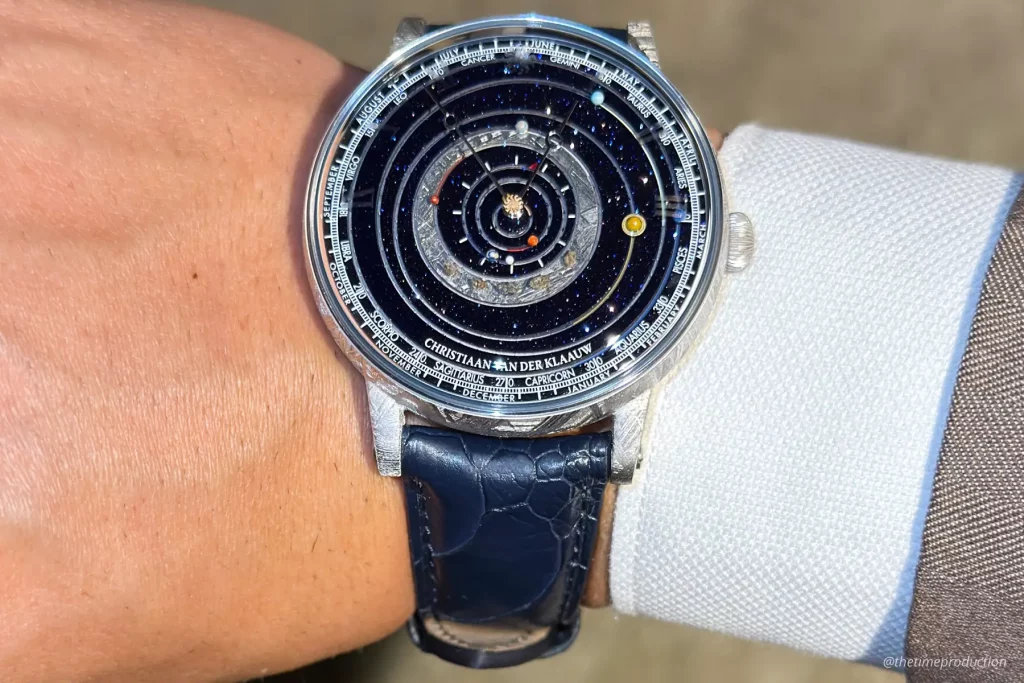
Dial
The Christiaan van der Klaauw Grand Planetarium Eccentric Meteorite evokes our star-studded solar system thanks to an aventurine glass dial rather than aventurine. Aventurine glass is a glass that contains metallic inclusions, unlike natural mineral aventurine, which is a type of quartz with natural inclusions such as mica, hematite or goethite. For the record, aventurine glass was discovered by accident in the famous glass-blowing center of Murano in the 17th century. Its name comes from the Italian expression “per avventura,” which means “by chance.” Interestingly, the name of this glass later inspired that of the natural mineral aventurine, due to their similarly sparkling appearance.
The dial is composed of nine pieces of aventurine glass, and 22 screws were required to secure it. Also, on the dial we find 8 planets painted by hand by a Geneva miniature painter, using a squirrel hair under a microscope, and a rotating sun bearing the brand’s logo. Between the orbits of Mars and Jupiter lies a meteorite ring containing five fragments of nakhlite meteorite ejected from ancient Martian volcanic eruptions, making it one of the rarest known meteorites. They were thrown from the surface of Mars by asteroid impacts powerful enough to overcome Martian gravity. This process is rare and datable. It is estimated that the nakhlites were ejected about 11 million years ago, which is relatively recent on the cosmic scale. These elements represent the asteroid belt, a diffuse band of rocky debris thought to be the remains of planetary structures that never fused to form a planet, due to Jupiter’s disruptive gravitational influence.
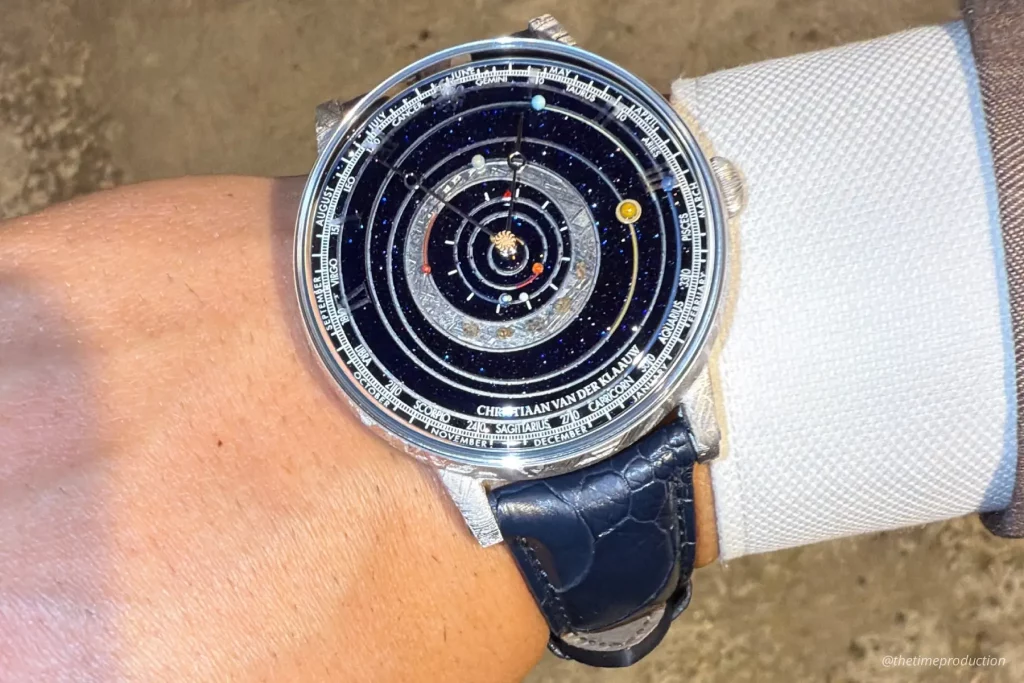
Movement
The Christiaan van der Klaauw Grand Planetarium Eccentric Meteorite is powered by the new CKM-01 calibre, developed in collaboration with the Swiss manufacture Uhrteil AG. The movement does not merely imitate astronomy; it reflects it, with eccentric orbits and a to-scale planetary motion. This self-winding movement beats at 21,600 vibrations per hour (3 Hz) and offers a 60-hour power reserve. It features star-shaped bridges, a skeletonized architecture and a gold-plated brass rotor, all hand-finished. It displays the hours, minutes, seconds (via rotation of the sun logo at the center), the date and the zodiac sign.
The relative sizes of the simulated planets are proportional to their real sizes in the solar system, and their movements are represented in real time. Mercury occupies the innermost orbit, completing a revolution in 87.97 days. Moving outward, the pace gradually slows: Venus follows with 224.70 days, then Earth marks the passage of 365.24 days, followed by Mars with 686.98 days, Jupiter with 11.86 years, Saturn in 29.46 years, Uranus in 84.02 years and Neptune, which makes a complete revolution in 164.80 years. To achieve this gear reduction and slow the system, it includes an impressive number of gears totaling 3,338 teeth, which were hand-cut, echoing the same artisanal methods practiced by Christiaan van der Klaauw himself at the time.
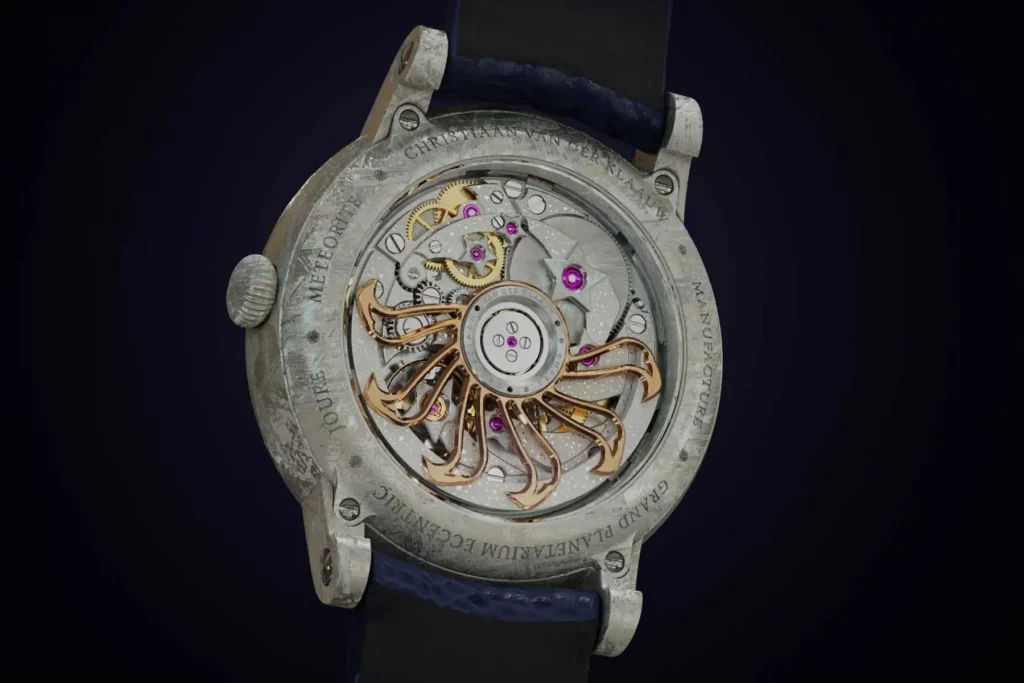
Strap
The Christiaan van der Klaauw Grand Planetarium Eccentric Meteorite here comes with a dark blue ostrich leather strap equipped with a platinum folding clasp bearing the brand’s logo, a detail that I found thoughtful and refined.
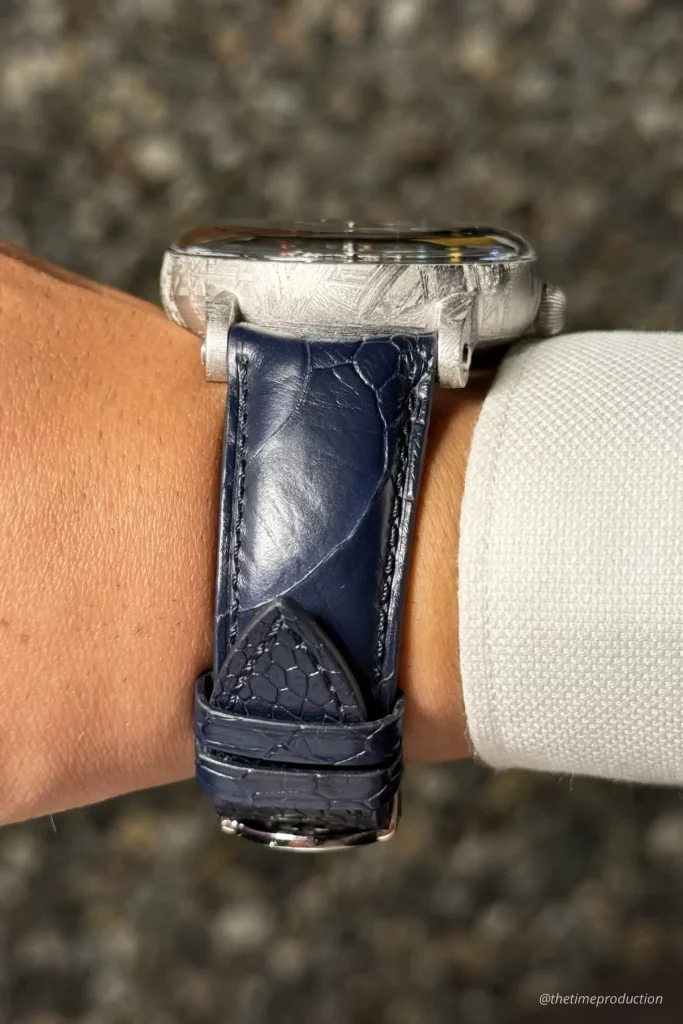
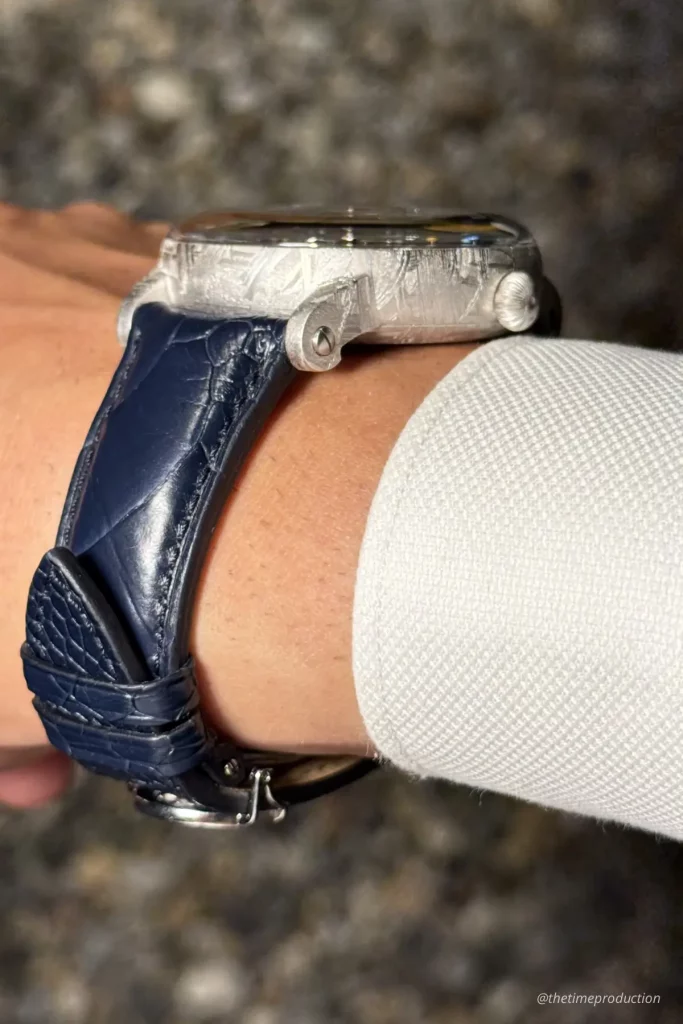
What is the price of the Christiaan van der Klaauw CVDK Planetarium?
The Christiaan van der Klaauw Grand Planetarium Eccentric Meteorite is limited to only three pieces. Its price is €580,000 (excluding VAT), a price in correlation with the rarity of this piece.
Christiaan van der Klaauw Grand Planetarium Eccentric Meteorite: a tribute to time itself
The Christiaan van der Klaauw Grand Planetarium Eccentric Meteorite is an entire universe on your wrist, very well executed. It is a watch for those who always venture further toward new frontiers. It reprises the brand’s signature complication and elevates it, both technically and artistically. This model allows astronomers and lovers of celestial mechanics to observe, in real time, the orbits of Mercury, Venus, Earth, Mars, Jupiter, Saturn, Uranus and Neptune as they revolve calmly around the Sun. The company has also appeared on the official list of the White Paper on Fine Watchmaking since 2016, which distinguishes the brand as a prestigious independent watchmaking house, able to claim the title of “Haute Horlogerie,” an ultimate sign of recognition in the industry.
What I love about Christiaan van der Klaauw is that the maison speaks to discerning collectors and knows how to remain exclusive and exacting without flooding the market. The universe of the stars makes me travel and lets me imagine the existence of a distant life. The brand perpetuates its founder’s legacy without changing course, with unmatched precision and a passion for representing celestial majesty through watchmaking.
From their workshop in Naarden, this close-knit team brings each limited series to life, all handmade with an exceptional sense of detail. I wanted to thank Pim Koeslag for this presentation of a model I had dreamed of approaching. Pim is a humble, passionate and brilliant man, with a remarkable career. He will be delighted to present the brand’s different models to you.
Christiaan Van Der Klaauw CVDK Planetarium – Watch Specifications
- Brand: Christiaan van der Klaauw
- Model: Grand Planetarium Eccentric Meteorite
- Reference: SLGC007
- Case Material: Meteorite
- Dial: Aventurine glass and meteorite decorated with eight hand-painted orbiting planets and a revolving sun
- Functions: Time (Hours, Minutes), running indicator (central sun), eccentric planetarium featuring the orbits of Mercury, Venus, Earth, Mars, Jupiter, Saturn, Uranus, and Neptune
- Movement: CKM-01 (base movement by Uhrteil AG with in-house planetarium module), Self-Winding, 21’600vph frequency (3Hz), 32 jewels
- Power Reserve: 60 Hours
- Water Resistance: 3 ATM
- Crystal: Double-domed and engraved sapphire
- Caseback: Sapphire
- Case Dimension: 44mm × 14.3mm
- Strap: Dark Blue Ostrich Leather with Platinum Folding Clasp
- Availability : Limited Edition of 3 Pieces
- Retail Price: € 580’000 (excluding VAT)
Did you know about this brand? Are you passionate about space? Share your impressions in the comments.
For more information about Christiaan Van Der Klaauw, here.
